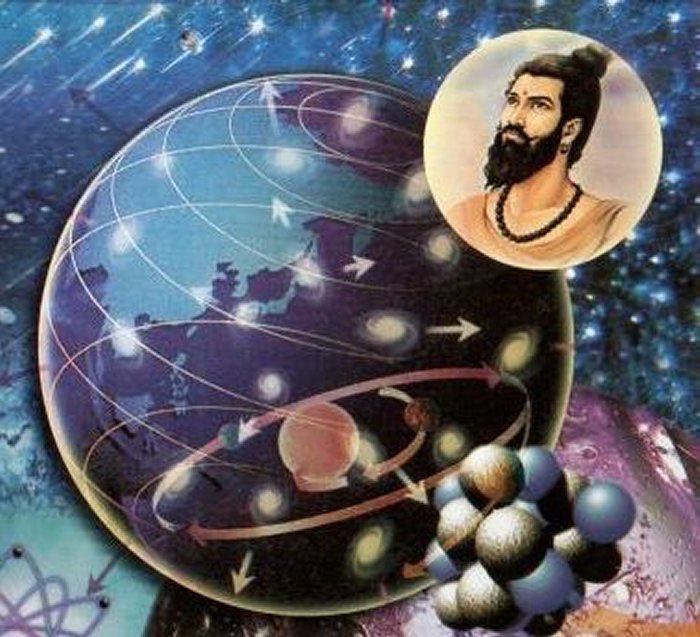Atomic Theory Was Invented 2,600 Years Ago By Acharya Kanad – A Genius Ahead Of His Time
A. Sutherland - AncientPages.com - The eminent historian, T.N. Colebrook has said, "Compared to the scientists of Europe, Acharya Kanad and other Indian scientists were the global masters of this field."
Our quest for lost ancient knowledge takes us this time to India where we encounter a very intelligent individual who was a great thinker far ahead of his time.
In 1803, during a lecture at the Royal Institution in London, John Dalton (1766-1844) an English chemist gave his first public account of the atomic theory. He proposed that atoms of different elements could be distinguished by differences in their weights. His theory was based on ideas that all matter is composed of atoms that cannot be made or destroyed and all atoms of the same element are identical.
He was also able to detect that different elements have different types of atoms and chemical reactions occur when atoms are rearranged.
In modern times, John Dalton has been credited as the inventor of the atomic theory.
However, he was not the first one to discover the concepts of atoms. About 2,600 years ago, Acharya Kanad, an Indian philosopher and a great thinker far ahead of his time, developed what we today call the atomic theory.
Born in in Prabhas Kshetra near Dwarika in Gujarat, India, Acharya Kanad expressed interest in tiny objects already as a small child.
Once, on his way to a Prayag on a pilgrimage, he saw thousands of pilgrims littered the town roads and the banks of river Ganga with flowers and rice grains which they offered at the temple.
To everyone's astonishment he started collecting the grains of rice.
Crowd gathered around him and one person asked him why he was collecting the grains even beggars wouldn't like to touch these.
He told them that no matter how small the object could be, it is still a part of the universe. Individual grain might seem useless but the collection could serve as someone's meal."
Since then people started calling him "Kanad", as "Kan" in Sanskrit means "smallest particle" like grains.
Acharya Kanad was the first person in the world to discuss atoms and molecules.
He said that "every object of creation is made of atoms which in turn connect with each other to form molecules."
He found out that the universe is made up of "kana" means atoms. He studied atomic theory and found the way atoms move and react with each other.
In time, people started to call him "Acharya- the teacher", hence the name Acharya Kanad.
Acharya Kanad should be considered "The Father of Atomic Theory."
Another Indian philosopher, Pakudha Katyayana who also lived in the 6th century B.C. and was a contemporary of Gautama Buddha, also propounded ideas about the atomic constitution of the material world.
"Ancient Indian theories were brilliant imaginative explanations of the physical structure of the world, and in a large measure, agreed with the discoveries of modern physics, "A.L. Basham, Australian Indologist said.
So, once again, we have seen that so many of our modern inventions and theories are simple re-inventions based on the knowledge our ancestors were familiar with thousands of years ago.
Written by – A. Sutherland - AncientPages.com Senior Staff Writer
Copyright © AncientPages.com All rights reserved. This material may not be published, broadcast, rewritten or redistributed in whole or part without the express written permission of AncientPages.com
More From Ancient Pages
-
 Seven New Ancient Buddhist Caves – One With ‘A Harmika’ – Discovered In Mumbai
News | Jan 19, 2016
Seven New Ancient Buddhist Caves – One With ‘A Harmika’ – Discovered In Mumbai
News | Jan 19, 2016 -
 Ankou: Breton Angel Of Death That Delivers Souls To The Underworld
Featured Stories | Mar 31, 2025
Ankou: Breton Angel Of Death That Delivers Souls To The Underworld
Featured Stories | Mar 31, 2025 -
 DNA Study Reveals 250 Siberians Became The First Native American Population
Archaeology | May 12, 2018
DNA Study Reveals 250 Siberians Became The First Native American Population
Archaeology | May 12, 2018 -
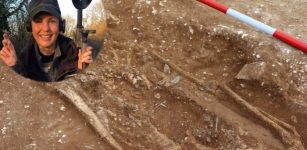 Anglo-Saxon Warlord’s Grave: Archaeologists And Metal-Detectorists Work Together
Archaeology | Oct 7, 2020
Anglo-Saxon Warlord’s Grave: Archaeologists And Metal-Detectorists Work Together
Archaeology | Oct 7, 2020 -
 A 2,500-Year-Old Planned City In Tarighat, Chhattisgarh, India
Civilizations | Oct 8, 2014
A 2,500-Year-Old Planned City In Tarighat, Chhattisgarh, India
Civilizations | Oct 8, 2014 -
 Fossil Teeth Reveal: Humans Were Present In Asia ‘20,000 Years Earlier’ Than Previously Thought
Archaeology | Oct 15, 2015
Fossil Teeth Reveal: Humans Were Present In Asia ‘20,000 Years Earlier’ Than Previously Thought
Archaeology | Oct 15, 2015 -
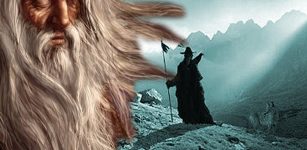 Vikings: Facts And History About The Tough Norse Seafaring People
Ancient History Facts | Mar 13, 2017
Vikings: Facts And History About The Tough Norse Seafaring People
Ancient History Facts | Mar 13, 2017 -
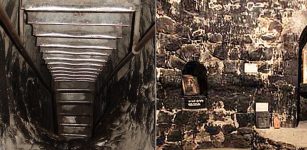 Nearly 2,000-Year-Old Aqueduct Discovered Near Ancient Monastery Khor Virap In Armenia
Archaeology | Jan 29, 2020
Nearly 2,000-Year-Old Aqueduct Discovered Near Ancient Monastery Khor Virap In Armenia
Archaeology | Jan 29, 2020 -
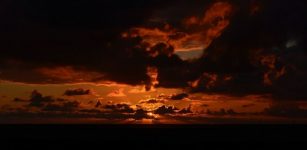 Mysterious Black Cloud Caused A Global Catastrophe In 536 A.D. And 18 Months Of Darkness
Featured Stories | May 25, 2021
Mysterious Black Cloud Caused A Global Catastrophe In 536 A.D. And 18 Months Of Darkness
Featured Stories | May 25, 2021 -
 Mysterious Standing Deer Stones Of Mongolia -Their Purpose And Creators Remain Unknown
Ancient Mysteries | Jun 18, 2014
Mysterious Standing Deer Stones Of Mongolia -Their Purpose And Creators Remain Unknown
Ancient Mysteries | Jun 18, 2014 -
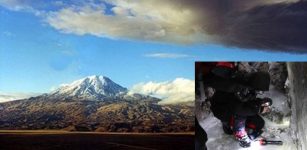 Search For Noah’s Ark Continues – The ‘Inside Mount Ararat’ Research Project
Featured Stories | May 4, 2014
Search For Noah’s Ark Continues – The ‘Inside Mount Ararat’ Research Project
Featured Stories | May 4, 2014 -
 On This Day In History: Great Siege of Malta: Ottoman Forces Made Attempt To Conquer Malta And Failed – On May 18, 1565
News | May 18, 2016
On This Day In History: Great Siege of Malta: Ottoman Forces Made Attempt To Conquer Malta And Failed – On May 18, 1565
News | May 18, 2016 -
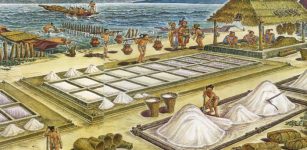 Ancient Maya Saltworks: Salt Was A Commodity Or Money In Classic Maya Economy
Archaeology | Mar 23, 2021
Ancient Maya Saltworks: Salt Was A Commodity Or Money In Classic Maya Economy
Archaeology | Mar 23, 2021 -
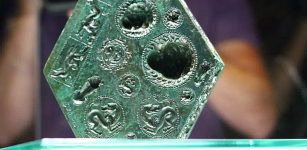 Unique 2,000-Year-Old Hexagonal-Shaped Bronze Matrix Of Sarmizegetusa Regia, Romania
Artifacts | Jan 7, 2016
Unique 2,000-Year-Old Hexagonal-Shaped Bronze Matrix Of Sarmizegetusa Regia, Romania
Artifacts | Jan 7, 2016 -
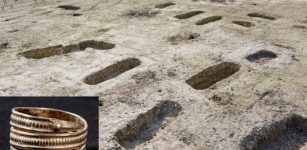 One Of The Largest Anglo-Saxon Burial Grounds Ever Uncovered In Britain Reported By Archaeologists
Archaeology | Jun 17, 2022
One Of The Largest Anglo-Saxon Burial Grounds Ever Uncovered In Britain Reported By Archaeologists
Archaeology | Jun 17, 2022 -
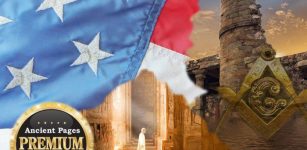 Freemasons Secrets – American Democracy Is Part Of An Ancient Universal Plan – Secret Societies’ Role – Part 3
Ancient Mysteries | Jul 14, 2018
Freemasons Secrets – American Democracy Is Part Of An Ancient Universal Plan – Secret Societies’ Role – Part 3
Ancient Mysteries | Jul 14, 2018 -
 Mysterious Death Of Cambyses II – Natural, Suicide Or Assassination By Darius I The Great?
Featured Stories | Apr 21, 2021
Mysterious Death Of Cambyses II – Natural, Suicide Or Assassination By Darius I The Great?
Featured Stories | Apr 21, 2021 -
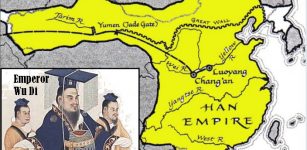 What Is Pax Sinica?
Ancient History Facts | Apr 26, 2018
What Is Pax Sinica?
Ancient History Facts | Apr 26, 2018 -
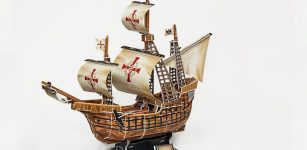 Italian Sailors Knew Of America 150 Years Before Christopher Columbus – Ancient Documents Reveal
Archaeology | Oct 8, 2021
Italian Sailors Knew Of America 150 Years Before Christopher Columbus – Ancient Documents Reveal
Archaeology | Oct 8, 2021 -
 Basajaun: Giant Blacksmith, ‘Lord Of The Woods’ And How People Learned Secrets Of Agriculture
Featured Stories | Aug 27, 2020
Basajaun: Giant Blacksmith, ‘Lord Of The Woods’ And How People Learned Secrets Of Agriculture
Featured Stories | Aug 27, 2020


